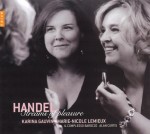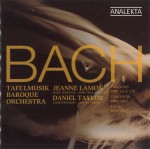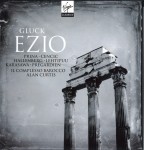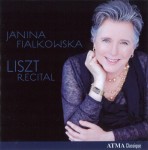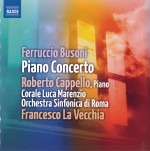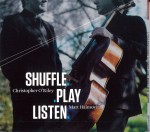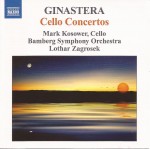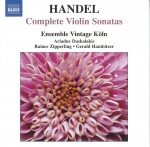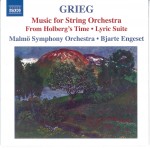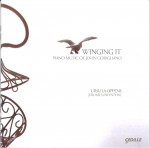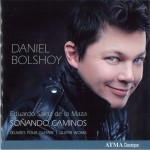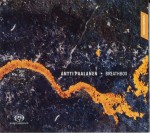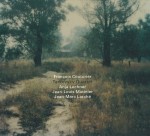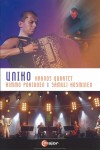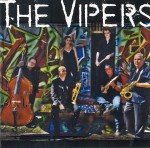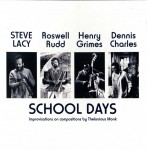Old Wine, New Bottles – Fine Old Recordings Re-Released - February 2012
 In 2002 Radio Netherlands Music issued the first volume of an Anthology of the Royal Concertgebouw Orchestra, a 13-CD box of live performances from 1935 to 1950. Five future volumes were promised that would cover performances, decade by decade, to the end of the century. The projected series is now complete with Volume Six containing great performances from 1990 to 2000 (RCO 11004, 14 CDs). Artists in that first volume included Walter, Monteux, Ansermet, Mengelberg, van Beinum, Abendroth, Jochum, Karajan, Kleiber, Boult, Klemperer, Furtwangler and others, all of whom were deceased by 1990. The works were from the standard concert repertoire of the day. This final edition brings us pretty well up to date with performances by eminent maestros and soloists of the decade. The editors who selected performances for inclusion have done well as there are no second rate renditions to be heard in any of the 37 individual works presented. Collectors may be relieved to know that there is no Beethoven Fifth or Ninth, (but there is a Sixth with Sawallisch); no Brahms symphonies, no Le Sacre du Printemps or Bolero to add yet another version to a balanced collection. There are two Shostakovich symphonies, the First (Solti) and the Fifth (Kurt Sanderling); an Elgar Second (Previn); an overwhelming Mahler Fifth (Tennstedt); Sibelius Fourth (Berglund); Bluebeard’s Castle (Ivan Fischer) and scores conducted by Chailly, Dutoit, Skrowaczewski, Jansons, Flor, de Leeuw, Fournet, de Waart, Boulez, Harnoncourt, Gardiner, Rozhdestvensky, Berio, Haitink and others. Composers include Frank Martin, Dutilleux, Lutosławski, Ravel, Zemlinsky, Bartok and the list goes on. Check Archivmusic.com for the complete contents … but buy it in Canada where it’s cheaper. Not only are the performances exemplary but the recorded sound is of audiophile quality throughout, aided by the special acoustics of the Concertgebouw. The Dutch engineers have the art of recording this orchestra down pat. An impeccable, if somewhat esoteric (but not for long), collection.
In 2002 Radio Netherlands Music issued the first volume of an Anthology of the Royal Concertgebouw Orchestra, a 13-CD box of live performances from 1935 to 1950. Five future volumes were promised that would cover performances, decade by decade, to the end of the century. The projected series is now complete with Volume Six containing great performances from 1990 to 2000 (RCO 11004, 14 CDs). Artists in that first volume included Walter, Monteux, Ansermet, Mengelberg, van Beinum, Abendroth, Jochum, Karajan, Kleiber, Boult, Klemperer, Furtwangler and others, all of whom were deceased by 1990. The works were from the standard concert repertoire of the day. This final edition brings us pretty well up to date with performances by eminent maestros and soloists of the decade. The editors who selected performances for inclusion have done well as there are no second rate renditions to be heard in any of the 37 individual works presented. Collectors may be relieved to know that there is no Beethoven Fifth or Ninth, (but there is a Sixth with Sawallisch); no Brahms symphonies, no Le Sacre du Printemps or Bolero to add yet another version to a balanced collection. There are two Shostakovich symphonies, the First (Solti) and the Fifth (Kurt Sanderling); an Elgar Second (Previn); an overwhelming Mahler Fifth (Tennstedt); Sibelius Fourth (Berglund); Bluebeard’s Castle (Ivan Fischer) and scores conducted by Chailly, Dutoit, Skrowaczewski, Jansons, Flor, de Leeuw, Fournet, de Waart, Boulez, Harnoncourt, Gardiner, Rozhdestvensky, Berio, Haitink and others. Composers include Frank Martin, Dutilleux, Lutosławski, Ravel, Zemlinsky, Bartok and the list goes on. Check Archivmusic.com for the complete contents … but buy it in Canada where it’s cheaper. Not only are the performances exemplary but the recorded sound is of audiophile quality throughout, aided by the special acoustics of the Concertgebouw. The Dutch engineers have the art of recording this orchestra down pat. An impeccable, if somewhat esoteric (but not for long), collection.
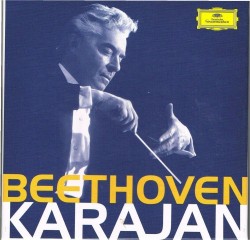 Although it has been 22 years since his death in 1989, Herbert von Karajan’s entire recorded repertoire, beginning in 1939 with Tchaikovsky’s “Pathétique” symphony, is still available. He recorded the nine Beethoven symphonies four times; for EMI in the early 1950s and then a new cycle every decade with his Berlin Philharmonic for DG. When that final nine was issued, the critics had a field day comparing and twittering about the felicities of movement versus movement of the three DG cycles. His interpretations did evolve through the years culminating in the 1982-4 performances which is the cycle chosen for Beethoven: Karajan, a 13-CD set of all Karajan’s Beethoven repertoire with the Berlin Philharmonic (DG 4779830). Also included are all the overtures, all the concertos – piano (the first with Eschenbach, and Weissenberg for the rest), violin (Mutter) and the triple (Zeltser, Mutter and Ma); Wellington’s Victory; the Missa Solemnis; the Grosse Fuge, and a couple of short pieces without opus numbers. Only Fidelio is missing. This is an exceptional collection offering superb performances in state-of-the-art re-mastering at an absurdly low price that would have been unimaginable just a few years ago when, if bought separately, these discs would have left the buyer with little change from $300.
Although it has been 22 years since his death in 1989, Herbert von Karajan’s entire recorded repertoire, beginning in 1939 with Tchaikovsky’s “Pathétique” symphony, is still available. He recorded the nine Beethoven symphonies four times; for EMI in the early 1950s and then a new cycle every decade with his Berlin Philharmonic for DG. When that final nine was issued, the critics had a field day comparing and twittering about the felicities of movement versus movement of the three DG cycles. His interpretations did evolve through the years culminating in the 1982-4 performances which is the cycle chosen for Beethoven: Karajan, a 13-CD set of all Karajan’s Beethoven repertoire with the Berlin Philharmonic (DG 4779830). Also included are all the overtures, all the concertos – piano (the first with Eschenbach, and Weissenberg for the rest), violin (Mutter) and the triple (Zeltser, Mutter and Ma); Wellington’s Victory; the Missa Solemnis; the Grosse Fuge, and a couple of short pieces without opus numbers. Only Fidelio is missing. This is an exceptional collection offering superb performances in state-of-the-art re-mastering at an absurdly low price that would have been unimaginable just a few years ago when, if bought separately, these discs would have left the buyer with little change from $300.
I must add that my very favourite recording, by anyone, of Beethoven’s Symphony No.9 is the Karajan/Vienna Philharmonic performance recorded in the Musikverein under very difficult, near impossible conditions in 1947. The resourceful, now legendary producer, Walter Legge, was the driving force who actually did make it happen. The astute Legge engaged Elizabeth Schwarzkopf, Elizabeth Hongen, Julius Patzak and Hans Hotter. It was by this recording that the world first heeded the young (not of the old school) Herbert von Karajan. This outstanding performance is a celebration, a triumphant and positive statement of what Beethoven is all about. (EMI CD 0724347687822).
 EMI has been assembling their recordings of particular musicians, instrumentalists, ensembles and conductors and issuing performer-dedicated packages at super-budget prices. Sir John Barbirolli – The Great EMI Recordings (EMI 5099945776724) is a ten-CD set containing 36 of his best performances, conducting seven different orchestras, dating from 1957 to 1969. Collectors will be especially thrilled with these selections as Barbirolli was a superlative musician and one of the great conductors of the century. Many of these are not only his best but, arguably, the best available versions of many repertoire staples. The 1957 recordings are all with the Halle Orchestra: the Elgar Cello Concerto with Andre Navarra; Ravel’s Ma Mère l’Oye Suite; Tchaikovsky’s Symphony No.4; Vaughan Williams “London” symphony; Bax’s Garden of Fand; and Butterworth’s A Shropshire Lad. Some of the later recordings included here are La Mer, La Valse, Tchaikovsky’s Serenade for Strings, Mahler’s Symphony No.5 and Elgar’s Symphony No.1 and Enigma Variations. Janet Baker is the soloist in Les Nuits d’été by Berlioz, Mahler’s Rückert-Lieder and Elgar’s Sea Pictures. Brahms, Sibelius and Puccini are also represented. The sound is remarkably fresh.
EMI has been assembling their recordings of particular musicians, instrumentalists, ensembles and conductors and issuing performer-dedicated packages at super-budget prices. Sir John Barbirolli – The Great EMI Recordings (EMI 5099945776724) is a ten-CD set containing 36 of his best performances, conducting seven different orchestras, dating from 1957 to 1969. Collectors will be especially thrilled with these selections as Barbirolli was a superlative musician and one of the great conductors of the century. Many of these are not only his best but, arguably, the best available versions of many repertoire staples. The 1957 recordings are all with the Halle Orchestra: the Elgar Cello Concerto with Andre Navarra; Ravel’s Ma Mère l’Oye Suite; Tchaikovsky’s Symphony No.4; Vaughan Williams “London” symphony; Bax’s Garden of Fand; and Butterworth’s A Shropshire Lad. Some of the later recordings included here are La Mer, La Valse, Tchaikovsky’s Serenade for Strings, Mahler’s Symphony No.5 and Elgar’s Symphony No.1 and Enigma Variations. Janet Baker is the soloist in Les Nuits d’été by Berlioz, Mahler’s Rückert-Lieder and Elgar’s Sea Pictures. Brahms, Sibelius and Puccini are also represented. The sound is remarkably fresh.
 Sir Charles Mackerras (1925-2010) was an Australian musician who left for England in 1947 to become a conductor after a jaunt as principal oboist in the Sydney Symphony Orchestra. He played oboe and cor anglais in the Sadler’s Wells orchestra and later, on a scholarship from the British Council, he studied conducting with Václav Talich in Prague. He was enamored with, and became an authority on, Czech repertoire, in addition to being a respected interpreter of music from every period. EMI’s box Charles Mackerras – Master of Orchestral Texture (5099909818927) has a delightful collection of Mackerras specialties including Mozart’s Symphony No.40 in G Minor, Dvorak’s Seventh, Janáček’s Sinfonietta, Mahler’s Fifth, Delius’ Paris – The Song of a Great City, Elgar’s Enigma Variations and some shorter showpieces including two Mackerras arrangements of Sir Arthur Sullivan: the Cello Concerto and the ballet Pineapple Poll. By the way, there is also a budget set of acclaimed performances of the nine Beethoven symphonies with Mackerras conducting the Royal Liverpool Philharmonic from EMI (CFP 7243575751 5 CDs).
Sir Charles Mackerras (1925-2010) was an Australian musician who left for England in 1947 to become a conductor after a jaunt as principal oboist in the Sydney Symphony Orchestra. He played oboe and cor anglais in the Sadler’s Wells orchestra and later, on a scholarship from the British Council, he studied conducting with Václav Talich in Prague. He was enamored with, and became an authority on, Czech repertoire, in addition to being a respected interpreter of music from every period. EMI’s box Charles Mackerras – Master of Orchestral Texture (5099909818927) has a delightful collection of Mackerras specialties including Mozart’s Symphony No.40 in G Minor, Dvorak’s Seventh, Janáček’s Sinfonietta, Mahler’s Fifth, Delius’ Paris – The Song of a Great City, Elgar’s Enigma Variations and some shorter showpieces including two Mackerras arrangements of Sir Arthur Sullivan: the Cello Concerto and the ballet Pineapple Poll. By the way, there is also a budget set of acclaimed performances of the nine Beethoven symphonies with Mackerras conducting the Royal Liverpool Philharmonic from EMI (CFP 7243575751 5 CDs).



